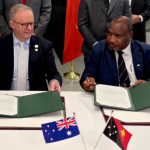In a decisive move to stimulate economic growth, the Reserve Bank of India (RBI) announced a significant 50 basis point reduction in the repo rate on June 6, 2025, bringing it down to 5.5%. This marks the third consecutive rate cut this year, totaling a 100 basis point decrease, and represents the most substantial single cut since the 75 basis point reduction during the COVID-19 pandemic in March 2020.
Monetary Policy Adjustments
Alongside the repo rate cut, the RBI reduced the Cash Reserve Ratio (CRR) by 100 basis points to 3%, aiming to infuse approximately ₹2.5 lakh crore into the banking system to enhance liquidity and encourage lending. The central bank also shifted its monetary policy stance from ‘accommodative’ to ‘neutral,’ signaling a balanced approach between fostering growth and maintaining inflation control.
Economic Indicators
The RBI’s decision was influenced by a notable decline in inflation, with the Consumer Price Index (CPI) dropping to 3.16% in April 2025, the lowest in nearly six years. This easing inflation provided the central bank with the flexibility to focus on stimulating growth. Despite a robust 7.4% GDP growth in the first quarter of 2025, the annual growth rate slowed to 6.5% from 9.2% the previous year, prompting the need for monetary support to achieve the government’s aspirational 8% growth target.
Market Response
The financial markets responded positively to the RBI’s announcement. The Sensex surged by 747 points, closing at 82,189, while the Nifty Realty index rose nearly 5%, reflecting investor optimism in rate-sensitive sectors such as banking, real estate, and automobiles.
Sectoral Impact
- Real Estate: The rate cut is expected to rejuvenate the affordable housing segment, particularly in cities like Kolkata, where developers anticipate increased sales in units priced below ₹50 lakh.
- Automobiles: Lower interest rates are projected to boost vehicle sales by enhancing loan affordability, with industry stakeholders expressing strong support for the RBI’s decision.
- Banking: The combination of rate cuts and increased liquidity is anticipated to improve credit growth, benefiting banks and non-banking financial companies (NBFCs).
Future Outlook
While the RBI has provided substantial monetary support to the economy, Governor Sanjay Malhotra indicated that future rate decisions would be data-dependent, considering the evolving economic landscape and global uncertainties. Analysts suggest that while the current policy stance is neutral, further rate cuts may be limited unless warranted by significant changes in economic indicators.
The central bank’s proactive measures aim to balance the dual objectives of sustaining economic growth and maintaining price stability, positioning India to navigate the complexities of the global economic environment effectively.










